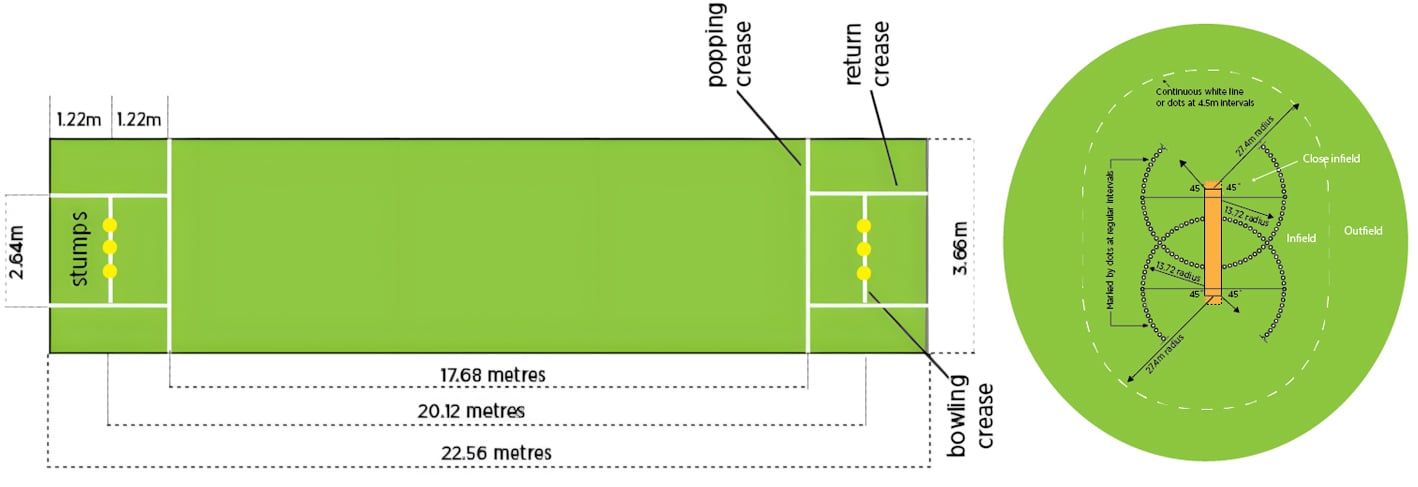Cricket lighting – layout, standard and lighting design
Cricket lighting – layout, standard and lighting design
Introduction
Cricket is a sport that has been a favourite for centuries, with millions of fans and players in different countries. However, playing cricket at night poses some challenges such as visibility, safety and comfort. Cricket is like any sport ( For football, tennis, basketball, please check accordingly ) where proper lighting ensures player performance, enhances the fan experience and promotes safety. Cricket stadiums, as sports infrastructure, are relevant to people’s lives, and as playing fields their planning is relevant to the planning and development of sport in this country. This is why cricket stadiums need to have adequate and appropriate cricket lighting solutions to meet the regulations and requirements of the sport. In this article, we will look at some of the basics of cricket stadium lighting (including pitch dimensions, lighting standards), why LED lighting is the best choice for cricket stadiums and how ZGSM’s solutions can transform our playing experience and more.
Dimension of cricket stadium
Cricket pitches can be either round or oval. A round cricket pitch is considered ideal, but in most cases it is oval, either because of site constraints or because it is easier to arrange spectator seating. Cricket pitches do not have fixed dimensions, but they are usually between 450 feet (137 metres) and 500 feet (150 metres) in diameter. At the centre of a cricket pitch is a fairway made up of a rectangular strip of clay and short grass called the ‘turf pitch’. The length of this pitch is 20.12 metres (from wicket to wicket) plus a minimum distance of 1.22 metres at each end to accommodate the return crease and the bowler’s running area. The width of the fairway is 3.05 metres. The dimensions of the pitch vary according to the level of cricket played.
The Turf pitch has three upright wooden posts, called ‘stumps’, at each end. Two ‘bails’ placed in grooves at the top of the stumps connect the three stumps. Together, the three stumps and the two bails form a wicket. In addition, there are infields, outfields and near infields in a cricket ground. On the playing surface, two semi-circles with a radius of 27.43 metres are drawn around each three-post wicket, and at the centre of these semi-circles are the wickets at each end of the pitch. The circles are marked by consecutive white lines or dots at intervals of 4.57 metres, which form the infield of the cricket ground. The area around the periphery of the infield is the outfield. In addition, the area within a dotted circle with a radius of 15 yards (13.7 metres) centred on each of the three wickets is known as the ‘close-infield’. The infield, outfield and close-infield are all used to enforce defensive limitations, and it has a lot to do with the defensive strategy a team develops.

Lighting regulations and requirements of cricket lighting
Cricket stadium lighting standards are usually published by national standardisation bodies or by the International Cricket Council (ICC) through technical specifications. However, we have searched the relevant websites and found no such document, which is a great pity. Cricket lighting standards can of course be set by other bodies such as the European Committee for Standardisation ( EN12193, and what’s EN12193? ) and the Illuminating Engineering Society of North America (RP-6-22), but their standards are quite varied and incomplete because they are very general when it comes to lighting standards for infield, outfield and pitch. However, their standards vary greatly and are not complete, as they are very general when it comes to lighting standards for inside, outside and pitch. By reviewing the best in the lighting industry and the information we have obtained from relevant customer projects, we believe that the following standards are the most relevant and detailed.
| Cricket stadium | Vertical illuminance level. w.r.t main camera | Horizontal illuminance level | ||||
| Illuminance(ave) | Vertical uniformity | Illuminance(ave) | Horizontal uniformity | |||
| (Lux) | U1(min/max) | U2(min/avg.) | (Lux) | U1(min/max) | U2(min/avg.) | |
| Pitch | 1500 | 0.60 | 0.70 | 2000 | 0.60 | 0.70 |
| Infield | 1250 | 0.50 | 0.60 | 1750 | 0.50 | 0.60 |
| Outfield | 1000 | 0.40 | 0.50 | 1500 | 0.40 | 0.50 |
